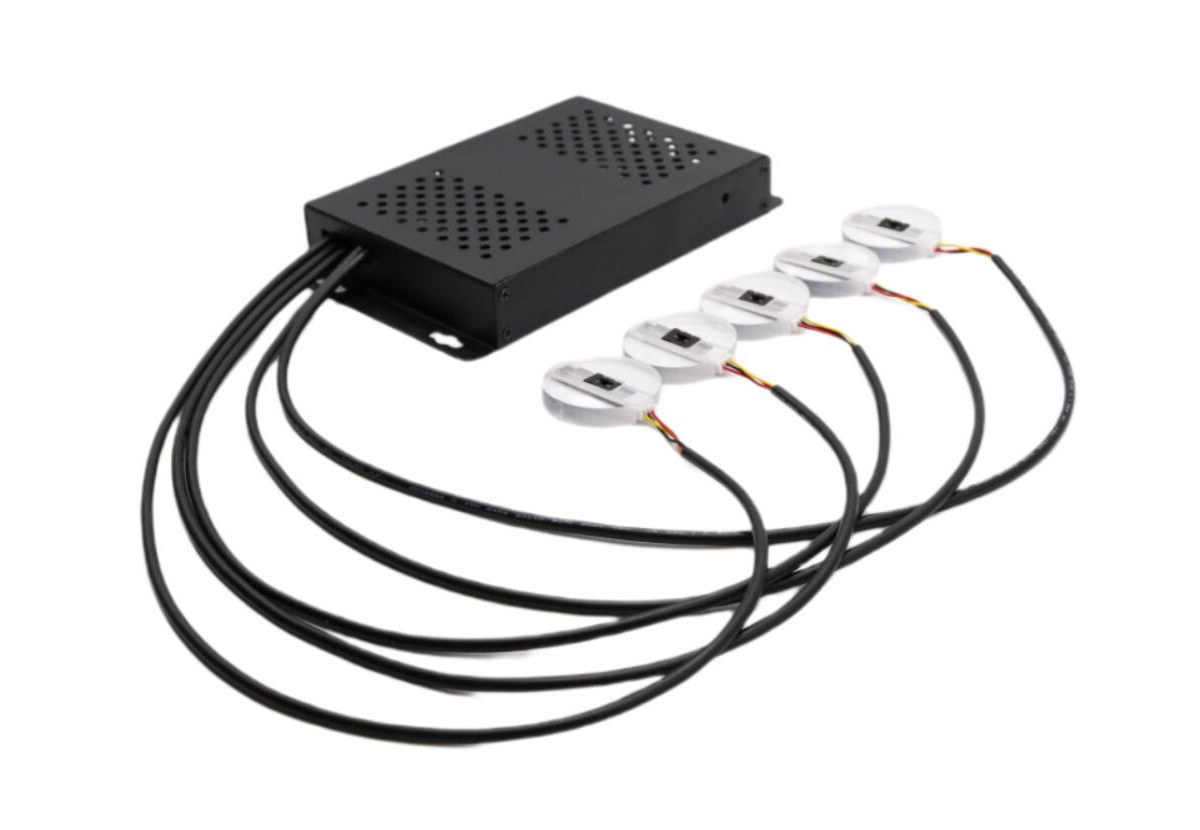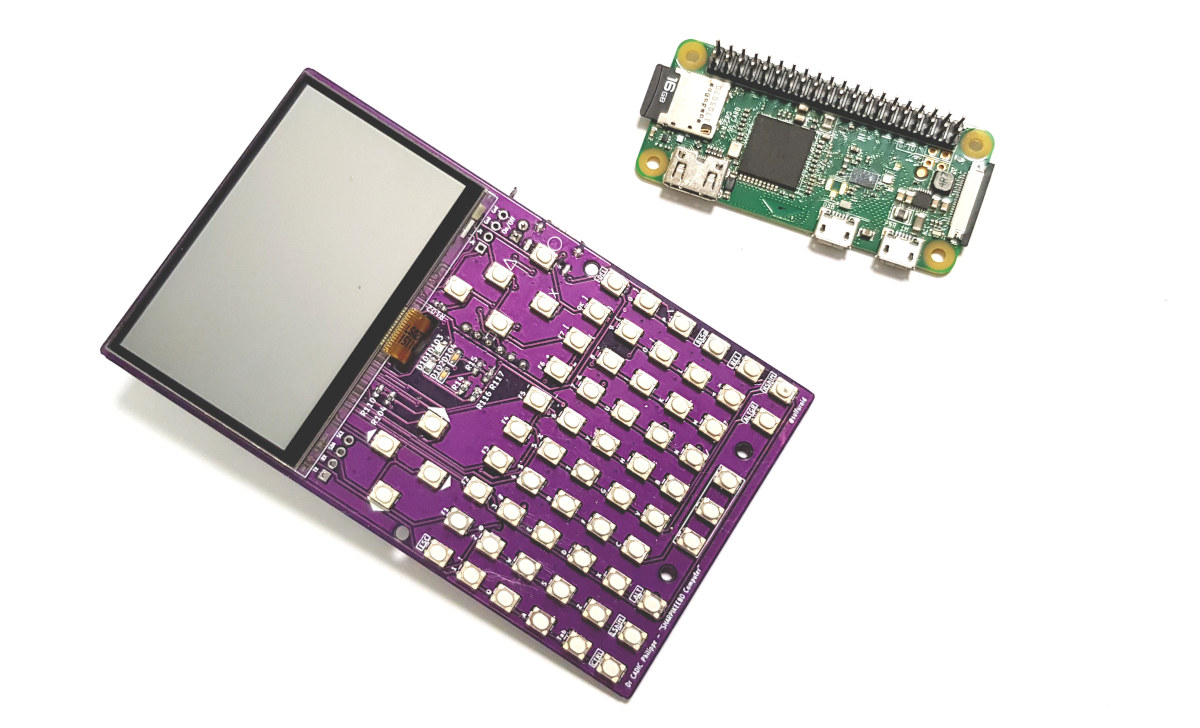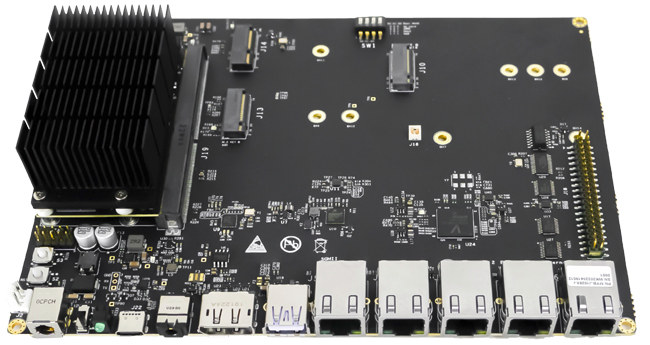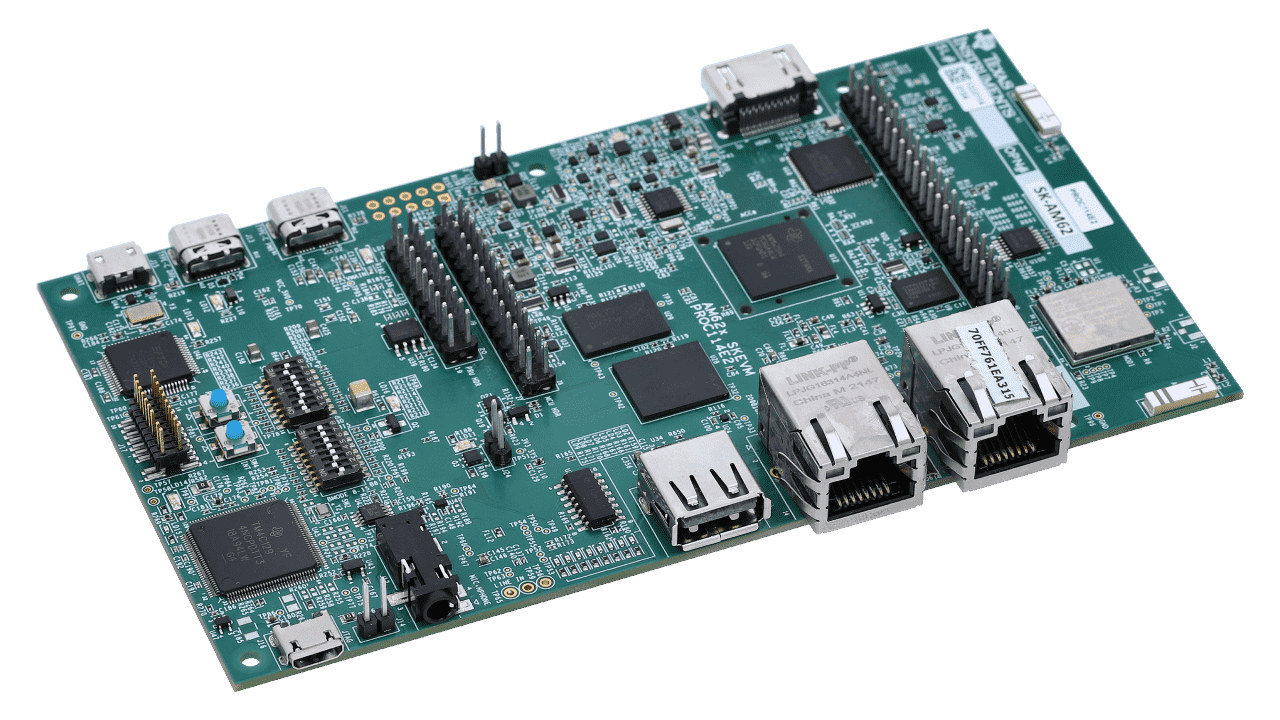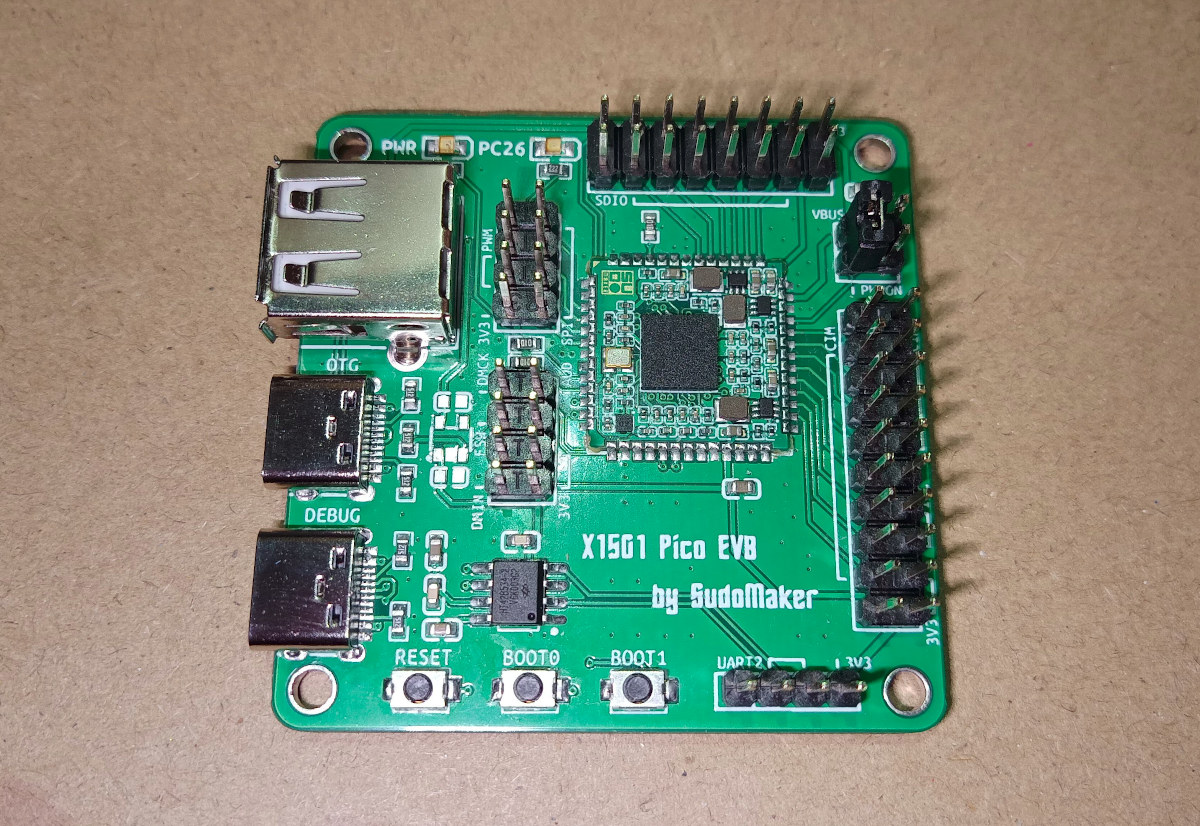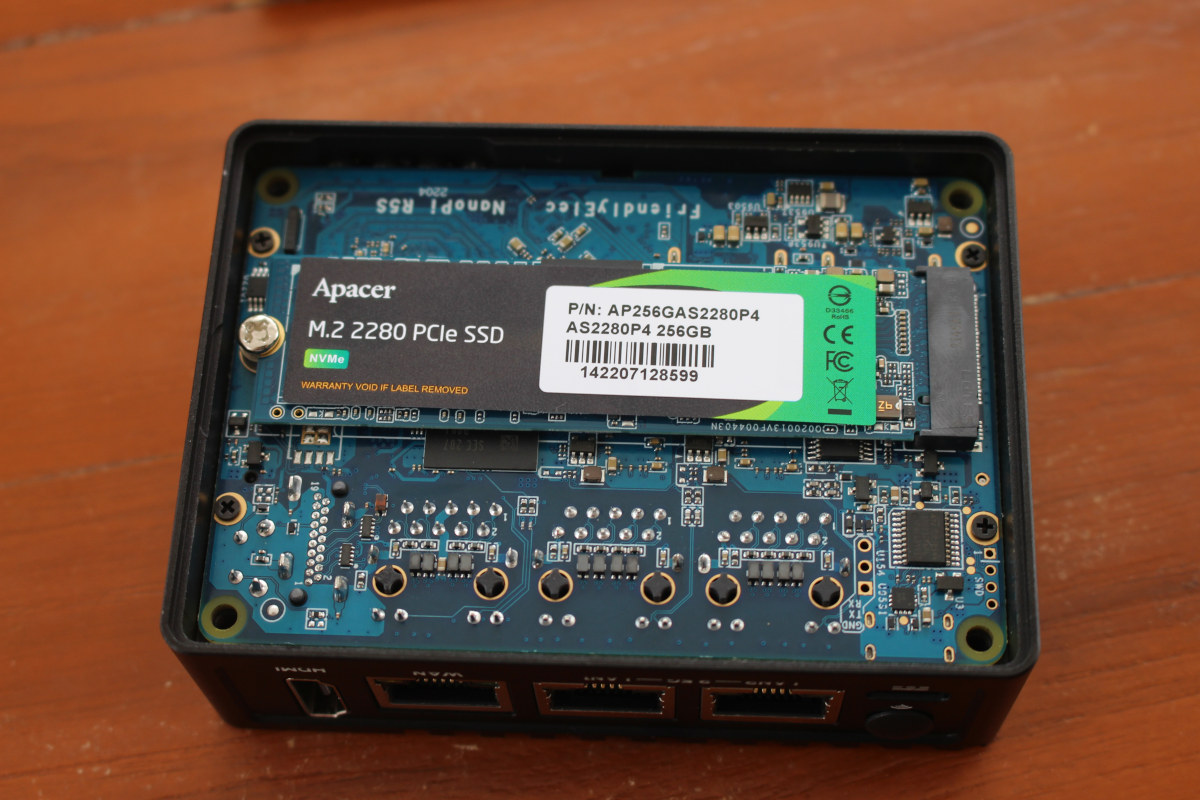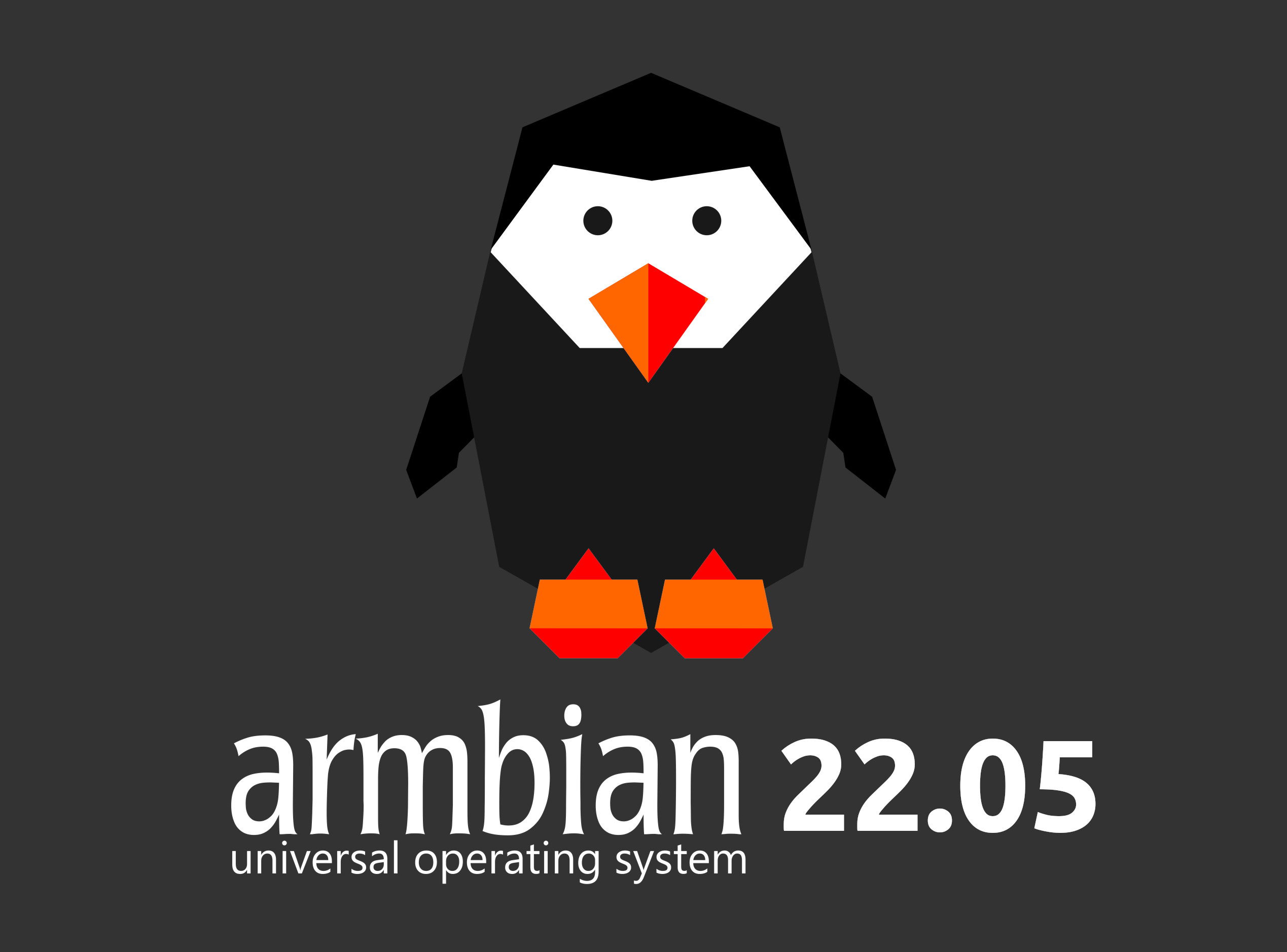Light sensors are used to turn on/off lights, adjust the brightness of displays, and more. But I’ve come across a use case I never thought of: object presence detection. In the digital signage work, such features if called “lift and learn”, and light sensors are used to detect when an object is present and play a video or display information about the product. That concept came to my attention when I saw a photo of Mekotronics R29 digital signage player with several cables coming out of the device and attached to what looked like white hockey pucks and turned out to be light sensors. Apart from the light sensors, Mekotronics R29 specifications are pretty standard: SoC – Rockchip RK3399 hexa-core processor with 2x Cortex-A72 cores, 4x Cortex-A53 cores, Arm Mali-T860MP4 GPU, 4K VP9, H.264, H.265, and 1080p60 VC-1, MPEG-1/2/4, VP6/8 video decoder System Memory – 4GB DDR Storage – 64GB […]
ShaRPiKeebo handheld Linux computer based on Raspberry Pi Zero (2) W ships with a LoRa radio (Crowdfunding)
Morpheans ShaRPiKeebo is a portable Linux computer based on Raspberry Pi Zero W or Zero 2 W SBC that reminds me of the Allwinner R8 powered PocketCHIP handheld computer that was introduced in 2016, and was quite popular (for a niche product) at the time. The ShaRPiKeebo comes with a physical QWERTY keyboard, a daylight-readable screen, and Wi-Fi & Bluetooth connectivity, but also adds a 433 MHz LoRa radio that should make it usable as an off-the-grid communicator. Just like PocketCHIP, the ShaRPiKeebo can be used for system administration, retro-gaming, pen testing, STEM education, and all sort of maker projects. ShaRPiKeebo specifications: Supported SBCs via 40-pin GPIO header – Raspberry Pi Zero W, Raspberry Pi Zero 2 W, and (maybe) compatible SBCs like Radxa Zero or Banana Pi M2 Zero Display – 2.7- inch SHARP memory display (LS027B7DH01) with 400×240 resolution, low-latency, low-power Connectivity 802.11 b/g/n WiFi 4, Bluetooth 4.2 […]
MYIR MYC-J1028X CPU module features NXP LS1028A dual Cortex-A72 SoC with time-sensitive networking (TSN)
MYIR has introduced the MYC-J1028X CPU module based on NXP LS1028A dual Cortex-A72 processor with time-sensitive networking (TSN) support, as well as the MYD-J1028X development board with five Gigabit Ethernet ports, and other interfaces to evaluate the solution. The MYC-J1028X is equipped with 2GB DDR4, 8GB eMMC flash, a 32Kbit EEPROM, and a temperature sensor by default, and exposes all I/Os through a 314-pin MXM 3.0 edge connector. The module also comes with footprints to solder a QSPI NAND Flash, XSPI NOR Flash, and/or ECC memory. Typical applications include industrial routers, industrial control, edge computing, automotive electronics, industrial IoT, and more. MYC-J1028X CPU module MYC-J1028X SoM specifications: SoC – NXP Layerscape LS1028A (LS1028AXN7PQA) dual-core Cortex-A72 processor @ 1.5 GHz with 3D GPU, integrated TSN Ethernet switches and Ethernet controllers System Memory – 2GB DDR4 (optional 3GB / 4GB DDR4); optional DDR4 ECC Storage 8GB eMMC flash (optional 16GB / 32GB) […]
TI Sitara AM623 & AM625 Cortex-A53 SoCs offer low-power AI for HMI and IoT applications
Texas Instruments has just launched the new Sitara AM62 family with AM623 and AM625 single to quad-core Cortex-A53 processors designed to provide IoT gateways and HMI applications with AI processing at low power, in some cases with up to 50% reduction in power consumption. The AM623 processor specifically targets Internet of Things (IoT) applications and gateways that may benefit from object and gesture recognition, while the AM625, equipped with a 3D GPU, should power HMI applications with edge AI and up to two full-HD displays. Sitara AM623 and AM625 processors Sitara AM623/AM625 key features and specifications: CPU – Single, dual, or quad-core Arm Cortex-A53 processor @ up to 1,400 MHz with 512KB L2 shared cache, plus 32KB I+D cache per core Co-processor – 1x Arm Cortex-M4F real-time core at up to 400 MHz with 256KB SRAM with SECDED ECC GPU (AM625 only) – Unnamed 3D GPU with support for OpenGL […]
X1501 Pico SoM – MIPS, Linux in a 16x16mm module
We’ve just written about the Notkia phone repurposing Nokia 168x phones with a new PCB featuring an Ingenic X1000E MIPS processor running mainline Linux, but it turns out the developer (Reimu NotMoe, CTO of SudoMaker) has also designed the X1501 Pico SoM, a tiny 16×16 system-on-module equipped with Ingenic X1501 MIPS system-in-package (SiP). The module can be that small because the single-core 1GHz Ingenic 1501 SiP embeds 8MB LPDDR, as well as apparently a 16Mbit NOR flash that stores stripped-down versions of U-boot and the Linux kernel, plus a minimal, busybox-based rootfs. X1501 Pico system-on-module specifications: SoC – Ingenic X1501 MIPS32r2 processor @ 1GHz, a MIPSr2 real-time core @ 300 MHz (not shown in datasheet), 8MB LPDDR and 16KB tightly coupled SRAM, 16Mbit NOR flash Castellated holes with USB 2.0 OTG, I2C, SPI, SDIO and DVP, analog mono audio output & digital microphone input EFUSE based Secure Boot Power Management […]
Robot cat girl doll leverages Khadas VIM3 SBC for AI-accelerated object detection/tracking
While Khadas VIM4 board has just been launched, the earlier Khadas VIM3 SBC has the advantage of featuring a 5 TOPS NPU that’s being leveraged by Lilium Robotics for their humanoid robots, notably the Lily Delta V7 robot cat girl doll using the Amlogic A311D board to control motors and provide AI features such as face and object detection and tracking. The Delta V7 is offered as an Android kit running Linux (Android refers to humanoid robot here) with a full motorized body kit, a head with a dual camera and sound system, accessories like a dress, wig, cat ears and tail, and other features that are more geared towards the adult crowd… Content of the Lily Delta V7 full Android kit: Full motorized body kit Motorized arms, legs, and torso with wide movement range Arms can support 0.5 kg payload 100 cm high, weighs about 5 kilograms Inserts: Face, […]
NanoPi R5S preview – Part 2: Ubuntu 20.04 (FriendlyCore)
I started the NanoPi R5S review with an unboxing, a teardown, a quick try of the pre-installed OpenWrt-based FriendlyWrt, and some iperf3 benchmarks on the 2.5GbE interfaces that were rather disappointing. I test further I switched to the Ubuntu 20.04-based FriendlyCore image since I’m more familiar with Debian-based operating systems, and some tools will not run on OpenWrt. Note the performance is still not quite optimal, and that’s why I call this a preview since numbers should improve in the next few months as more people tweak the software. OpenWrt optimizations? But before jumping to Ubuntu, I gave an updated version of FriendlyWrt a try as FriendElec told me they had added some optimizations: We have made some optimizations on the new image, such as NIC interrupt settings, and offload support… So I downloaded “rk3568-eflasher-friendlywrt-20220526.img.gz” found on Google Drive, flashed it to a microSD card with USBImager, and booted it […]
Armbian 22.05 release adds support for Orange Pi R1 Plus LTS, Radxa Zero & Rock 3A, DevTerm A06
The latest release of Armbian, version 22.05, is now out with hundreds of Linux kernel and user space-related bug fixes, a focus on stabilizing existing platforms, while still adding four new boards with Orange Pi R1 Plus LTS (RK3328), Radxa Zero (Amlogic S905Y2), Radxa Rock 3A (RK3568), and DevTerm A06 (RK3399). The community also added two new maintainers for ESPRESSObin and Radxa Rock Pi 4 (Model A) SBCs which should mean the images for those boards will be tested more regularly and potential issues fixed more quickly. You may want to read the more detailed changelog to see if any changes may impact the board(s) you are using. The new Armbian 22.05 release succeeds Armbian 22.02 outed on February 28, 2022. If you’d like to upgrade simply run those two commands on your existing installation:
|
1 2 |
sudo apt update sudo apt upgrade |
For new installation, browse the list of supported boards, select the Debian/Ubuntu image you’d […]


